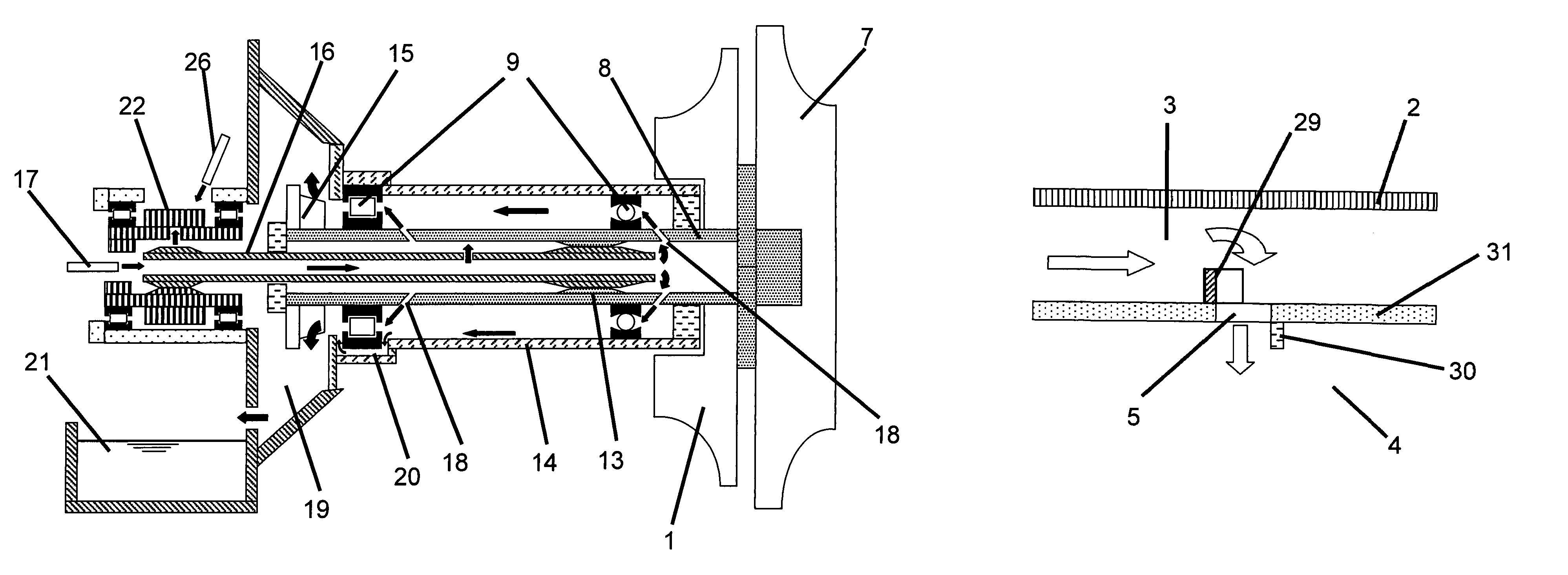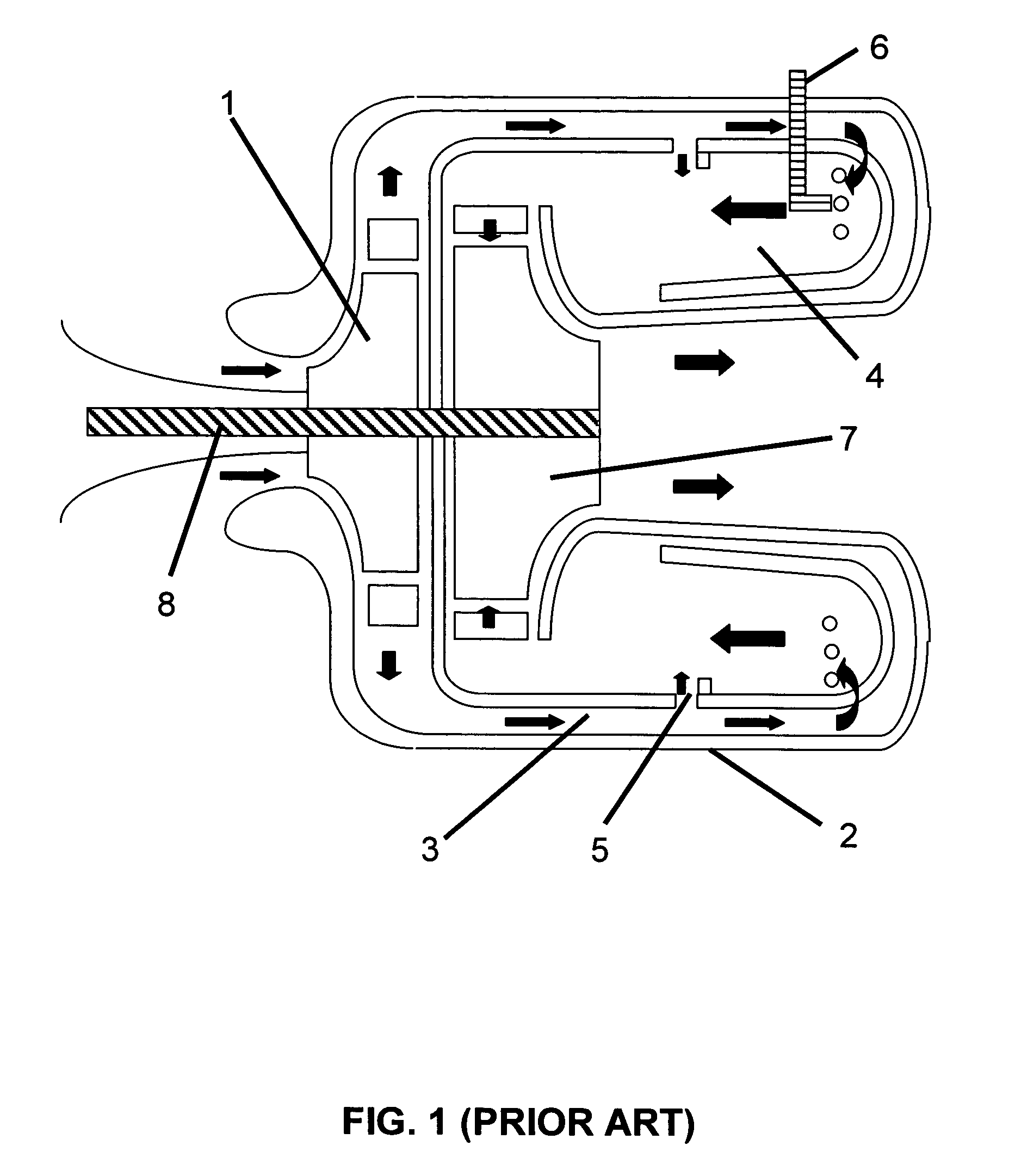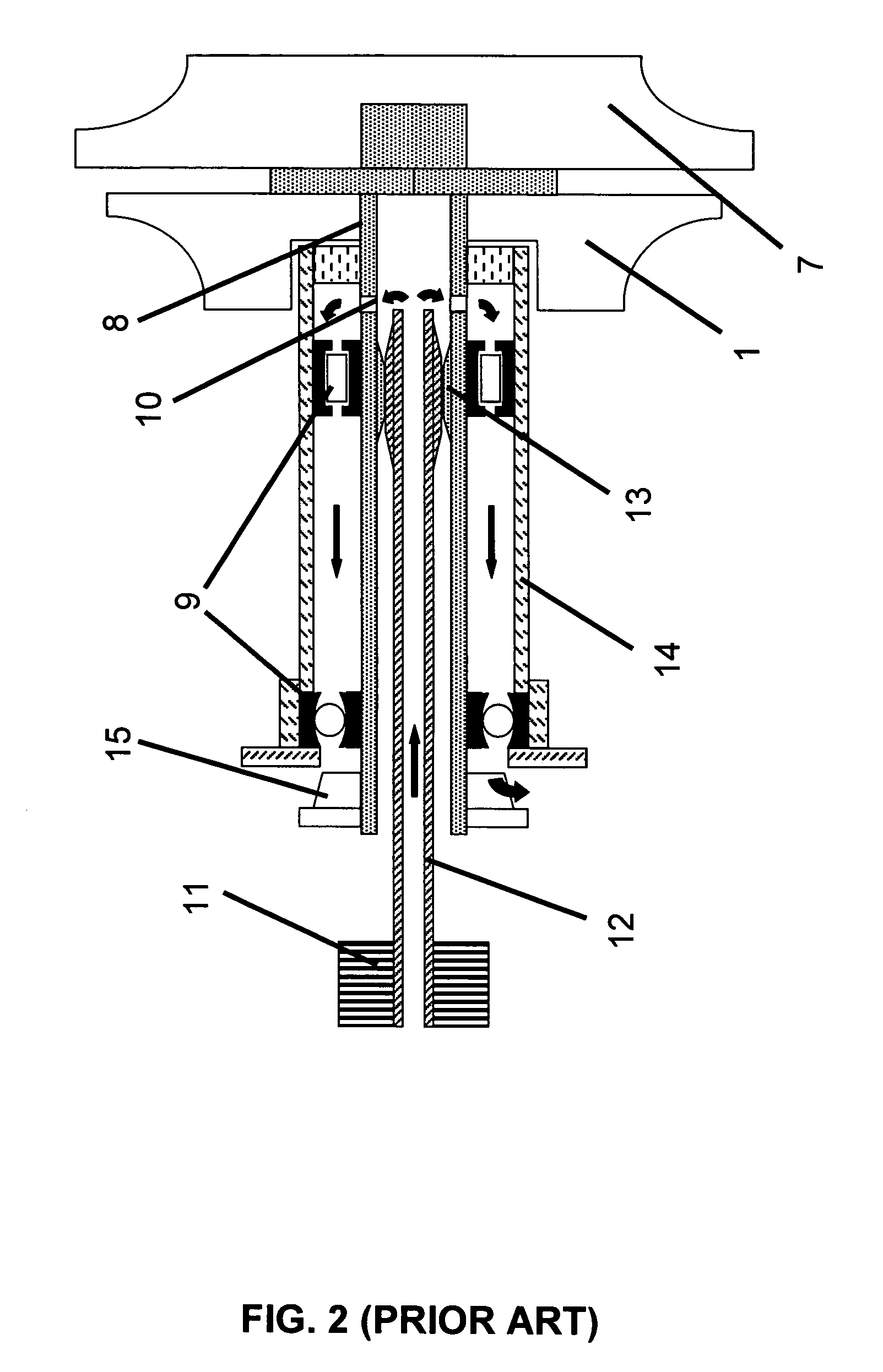One of the greater technical problems in designing an efficient, low-
power turbine is related to the fact that, due to physical operational principles, a reduction in the flow capacity and size thereof leads to having to increase the rotation speed of the compressor-
turbine assembly, thereby significantly increasing mechanical stress on the
moving parts materials.
This conditions the life-term of the components and is in part associated with the wear of the
moving parts.
The main causes of wear tend to be inadequate
lubrication of the bearings turning at high speed, gear alignment tolerances and imbalance, stress resulting from
thermal expansion of materials and transmission of vibrations between the high-speed shaft, the step-down gears and the output shaft delivering useful work, be it in electrical generators, propellers, water pumps, compressors et cetera.
The usefulness of this solution is nearly exclusively limited to lightweight shafts turning at very high speeds.
These weight and speed limitations
restrict the power range.
Magnetic bearings are extremely expensive and complex and, hence, not cost-effective in turbo machines of powers under 1,000 HP.
In order to achieve a low-maintenance turbine, the problems leading to wear in the
moving parts need to be addressed since they shorten the useful lifespan of the mechanical parts and increase the frequency of having to change the oil and filters.
Friction between the moving parts of the bearings leads to less efficiency since
mechanical energy is converted into heat, leading to heating of the oil.
This poses an additional requirement of having to provide means (radiators) for removing heat and distribution ducts for the oil systems, thereby increasing the quantity of components and complexity, in detriment of overall weight and compactness.
However, they are scarcely efficient at
wetting the roller paths due to the
impact and dispersion of the oil jets against the balls moving at speeds, as a result of the substantial speed difference between the jets and the balls.
Although this
system lessens the
impact of the abovementioned effects, it fails to solve the drawbacks conditioning the useful lifespan of the bearings.
One of the main drawbacks of this arrangement is the transmission of vibrations towards the high-speed shaft, which is detrimental to the useful lifespan of the bearings and is exacerbated by the interaction of more than one
torque transmission point.
Another factor limiting the lifespan of the turbine is the
maximum temperature to which the region at the edge of the
turbine rotor vane 7 is subjected, this being the part most prone to stresses and temperatures.
The problem of confining the
flame front to the
hot region furthermore causes emission of contaminants as a product of incomplete
combustion and problems of sudden
flame quenching during acceleration and deceleration transients.
An attempt to avoid this uses a
flame arrester in the primary, up-current from the turbine 7 intake, with the consequential addition of a device that requires high-temperature resistant materials, meaning more parts and loss of pressure, adversely affecting weight, simplicity, durability and efficiency of the turbo-engine.
Hence a drawback is the need for an additional
coupling gear, resulting in more parts, weight, difficult disassembling and detrimental to compactness and simplicity.
These devices have to be adjusted with extreme precision because of the narrow tolerances they are built around and are intensely affected by variations of atmospheric conditions.
Since these mechanisms are made up of a number of parts, it is considerably expensive and difficult to include redundant systems to improve the reliability thereof and of the entire engine turbine in general.
Furthermore, the operation of these mechanisms involves a complex ignition and control procedure during which the different ignition stages have to be manually enabled and disabled, opening the door to a new range of potential faults arising from human operational errors.
Although this reduces the probability of
human error, yet more systems are added to the already extremely complex systems of the turbine per se, adding further penalties in terms of cost and weight and introducing new fault sequences.
Because the auxiliary systems of the turbo-engines are complex, the power consumed by the auxiliary systems of high-power turbo-engines is similar to that of the systems of small turbo-engines.
This curtails the design and implementation of low-power turbo-engines, as upper limits in the
power consumption of auxiliary systems come into play in order for the operation of the turbine at low-power cruising speeds be self-sustainable.
This prior art has the drawback that the control valve has to be operated via servomechanisms or else by means of the
usual control cables, adding more devices with their attendant fault and maintenance rates.
In conclusion, it can be said that the traditional aircraft
turboshaft designs cannot be extrapolated down to the low-power range and still match the reliability, durability, efficiency and simplicity required in commercial
aviation or avoid drawbacks in maintenance and wear for the generation of
electricity or useful work on the ground.
This is due to the complexity and technical problems that need to be overcome go up as the power and the size thereof go down.
Proof of this is that available low-power turboshafts used for fixed or military installations are very complex, have limited lifespan, require a lot of maintenance and are pretty expensive considering the low power levels involved.
 Login to View More
Login to View More  Login to View More
Login to View More 


